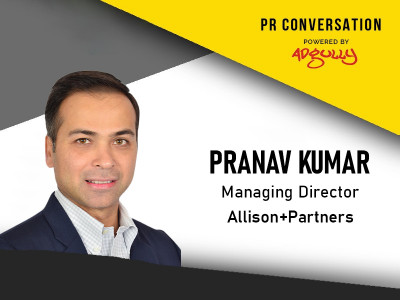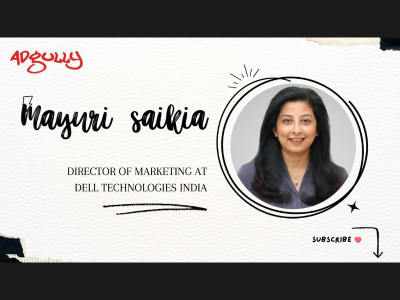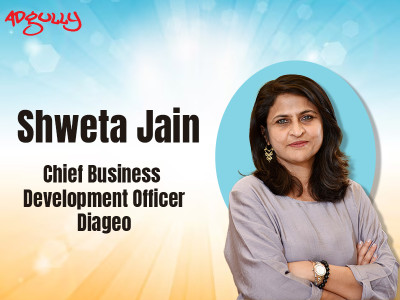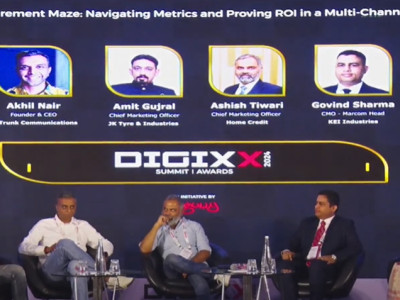PR firms will continue to bolster their social media marketing capabilities: Pranav Kumar
In the last 10 years, PR has taken a different dimension, especially after the entry of social media and the rapid shift to digital during the pandemic period. At the same time, the industry has been facing stiff challenges, moreover client expectations have also increased, with more emphasis being given to digital and online reputation management. The industry has undergone a radical shift and the current times have pushed the industry to change gears.
In conversation with Adgully, Pranav Kumar, Managing Director, Allison+Partners, speaks about the talent crunch facing the PR industry, how technology is impacting the PR operations, handling crisis situations in the era of social media, and much more.
What do you see as the biggest challenges facing the public relations industry in India today, and how do you plan to address them?
Let’s look at the opportunities first. If you look at the recent Public Relations Consultants of India’s (PRCAI) SPRINT 2022-23 report, communications consultancies are well positioned for robust growth in the year ahead, with top-tier firms growing in double digits. PR practitioners increasingly have a seat at the table, with at least eight out of every ten client’s C-suite working closely with their communications teams and agency partners. Coming out of the pandemic, public relations as a function has been indispensable, fuelling the need for empathy-based and purposeful communications.
None of this can happen without the right people and hence, talent is the number one challenge that the report identified in terms of challenges, beyond any macro-economic challenges or any other externalities. With attrition close to 20 per cent, consultancies will need to do a lot more to attract, manage, and retain talent. Lastly, the report also points to a greater need for bridging client and agency expectations, where the need for quality counsel and talent needs to better align with budgets.
How has technology changed the way in which public relations is practiced in India, and what new trends do you see emerging in this field?
I tend to think that PR firms are progressive on the whole and most modern-day firms experiment with, and embrace, new technology. Technology’s velocity is such that we need to constantly think ahead-of-the curve. Look no further than the November 2022 iteration of Open AI’s chatbot, Chat GPT 3 that takes generative AI to the next level with the capability to generate text, imagery, or other media in response to prompts. It certainly made the entire PR fraternity sit up and take notice.
We are seeing the emergence of two themes from this disruption: Firstly, we need to see technology as an enabler, the better we understand it and leverage it, the faster it will take away mundane and laborious tasks allowing us to focus on creativity and in developing campaigns that strike a chord with target audiences. Secondly, we need to not let technology take over or intimidate us, we need to define its use and control it, rather than the other way around. Tools like Chat GPT 3, Google Analytics, and many more will allow us to be more insights focused, helping us research better and equipped to run campaigns. While generative AI can create content at lightning speed, from what we know so far it’s best use at the moment lies in helping us iterate better versions of content we create with a human touch and one that resonates best with our audience.
How should a PR firm handle a crisis situation induced by a social media-influenced boycott campaign of its client?
Operating transparently, authentically, staying true to one’s brand promise, values, and good stewardship overall are bulwarks to prevent such a situation in the first place. However, massive social media and consumer empowerment, an environment teeming with polarization and misinformation means that even the most innocuous campaigns and well-intentioned brands can get into undesirable or sticky situations.
If a brand is a victim of misinformation, fake news, or any malice, a quick and effective response is important to shape the narrative and manage responses effectively to dispel misperceptions by issuing frequent statements and taking a proactive media strategy to get ahead of the news cycle. Precise monitoring is important to inform next steps or a shift in strategy. Should a brand’s campaign not pass the litmus test of consumer or political sensitivities and inadvertently offend a particular cohort, from our experience, it’s best to own up through expedient and transparent information and take corrective action. Of course, in extreme cases as we have seen in recent times, brands may even need to pull back on their ill-fated campaigns for greater good (including for business compulsions).
Every situation has its own backdrop and undercurrents. This is not necessary to have a prescriptive answer or modus operandi.
How has the PR industry in India evolved over the past few years, and what trends do you see emerging in the near future?
The pandemic showed us how resilient communications as a function is to businesses. The PR industry overall demonstrated agility by helping brands navigate a disrupted environment where it was important more than ever, to showcase authenticity, being purposeful, and yet balancing those objectives with corporate and brand reputation in order to accomplish business objectives such as brand building, or increasing market share compulsions. I expect that the times ahead will be no different with the lines between marketing and communications blurring even more.
Again, referring back to the PRCAI SPRING Report 2022-23, key emerging trends include the increasing role of regional media in India, with clients increasingly investing more in Tier - two/ three markets, the growth of paid media with shrinking editorial real-estate across publications, growing demand for specialised crisis counsel, public affairs, and internal communications. A digital-first world means that PR firms will continue to bolster their social media marketing capabilities, taking much more of marketing budgets from 10 per cent in 2019, to almost double of that by 2023/24.
How has your agency adapted to the changing media landscape, particularly with the rise of social media and digital communication?
Being creative public relations practitioners, we use our skills in messaging, engagement, storytelling, and content to help clients navigate today’s omni-channel world and in driving online-first outcomes. Our talented teams in India and around the world are adept in driving integrated campaigns given the changing media landscape. Our Marketing Innovation Team looks at meshing creativity with technology to offer a swath of solutions ranging from short-form and long-form video, editorial, on-going influencer campaigns, to paid media partnerships to help brands bring their stories to life.
What steps do you take to ensure that your clients’ messages are effectively communicated to their target audiences, and how do you measure the success of your PR campaigns?
While there are various ways to do this, we typically look at running messaging workshops with our clients and their stakeholders to help hone-in on specific messaging and developing an overarching narrative. Audience and channel segmentation come next with spokesperson training an essential prerequisite to be able to deliver those messages effectively. Monitoring and tracking on how we are doing on message delivery is critical for us to refine or tweak our strategies. Measurement criteria’s vary from client to client. We build customised dashboards which are closely linked to specific goals, including aligning to specific MIS parameters, client-side. We also use a variety of tools for mainstream and social media tracking to measure parameters like on-message delivery, share of voice, impressions, and more.
















Share
Facebook
YouTube
Tweet
Twitter
LinkedIn